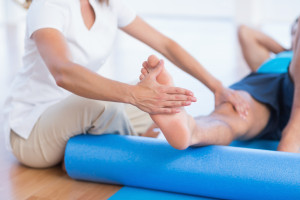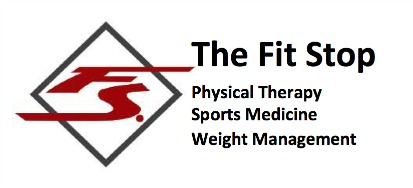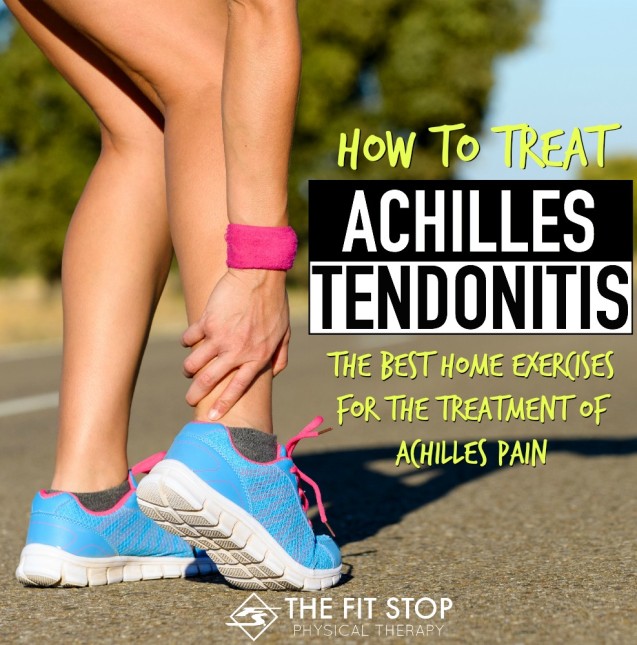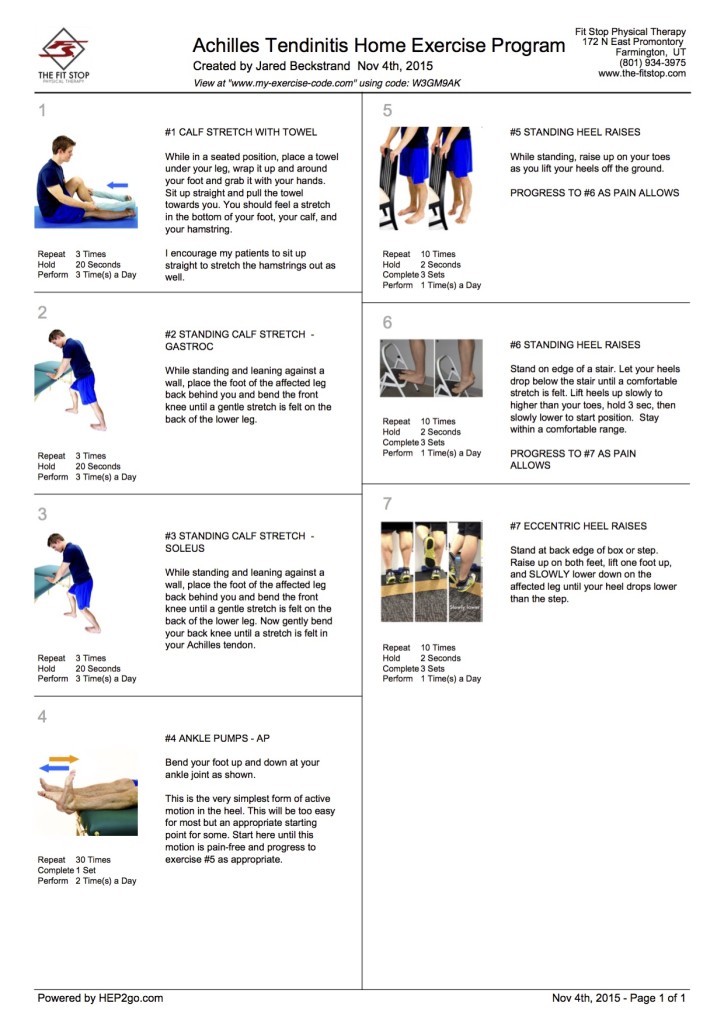How to treat Achilles Tendonitis
Be sure to follow The Fit Stop on Facebook for all your health and rehab needs!
Achilles Tendonitis (AT) is a relatively common pain in the Achilles tendon, the major tendon that connects the heel bone to the calf muscles. As with any term that contains the suffix “itis”, AT indicates inflammation of the Achilles tendon. This condition can affect anybody, but is most common in active populations (runners) who have experienced some sort of increase in training intensity or duration. It has been reported that 50% of runners will experience AT at some point in their life. Repetitively pushing off from the ball of the foot over miles of training can definitely cause some pain and inflammation. If you’ve been running or playing extra hard lately, have a pain in the heel or lower calf area that has been lingering for more that a few days, and is quite tender when pushed on, you probably have the dreaded AT. So, what now? Well, you are in luck, because today on the Fit Stop blog Toby Bluth, PT, DPT is breaking down Achilles tendonitis: what it is, why you get it, and steps you can take to help it to feel better! Keep reading for more!
 First, and probably the most intuitive step, (though for the avid runner, probably the hardest part of the whole healing process) it is time to take a little rest from your preferred activity that seems to aggravating the pain. I generally recommend a rest period of 4-8 weeks depending on the severity of the tendon issue. If the pain has been lingering for a week or more, it is likely that you have a slight tear in the tendon that is severe enough to warrant a little rest and rehab to heal. Just “playing” through the pain will most likely make the problem worse. Consider instead some “crosstraining”, meaning find an exercise (generally lower impact, such as biking, eliptical, water jogging to name a few), that doesn’t seem to make the pain worse. This way you can maintain some level of conditioning, without making the AT situation worse.
First, and probably the most intuitive step, (though for the avid runner, probably the hardest part of the whole healing process) it is time to take a little rest from your preferred activity that seems to aggravating the pain. I generally recommend a rest period of 4-8 weeks depending on the severity of the tendon issue. If the pain has been lingering for a week or more, it is likely that you have a slight tear in the tendon that is severe enough to warrant a little rest and rehab to heal. Just “playing” through the pain will most likely make the problem worse. Consider instead some “crosstraining”, meaning find an exercise (generally lower impact, such as biking, eliptical, water jogging to name a few), that doesn’t seem to make the pain worse. This way you can maintain some level of conditioning, without making the AT situation worse.
Second, get started on some physical therapy. Your physical therapist will get you started right away on a plan of care that should include the following:
 Manual therapy – probably the more important part of the treatment. With tears in muscles or tendons, the muscle fibers initially begin to heal with scar tissue. Scar tissue is not as strong as normal muscle tissue and can be painful. Your physical therapist will focus hands on manual therapy throughout the painful tendon and neighboring affected tissues, to help break up scar tissue and normalize tissue quality. This can be somewhat painful at times, but a very important step to help break the pain cycle and to help eliminate weakness in the tissue.
Manual therapy – probably the more important part of the treatment. With tears in muscles or tendons, the muscle fibers initially begin to heal with scar tissue. Scar tissue is not as strong as normal muscle tissue and can be painful. Your physical therapist will focus hands on manual therapy throughout the painful tendon and neighboring affected tissues, to help break up scar tissue and normalize tissue quality. This can be somewhat painful at times, but a very important step to help break the pain cycle and to help eliminate weakness in the tissue.
Therapeutic exercise – As the pain begins to subside, it will be important to begin a gradual progression of focused exercises to also help normalize the damaged tissue and to facilitate a return to activity. See my attached exercise program for AT for some examples of these kinds of exercises. This is a very individualized aspect of your treatment, so keep in mind that these are only very general examples. Everybody is different, and different exercises may be prescribed based on individual weaknesses throughout the foot, ankle and even hip and knee.
Physical agents – At times, your therapist will use treatments like cold or heat therapy, ultrasound and electrical stimulation, to help control pain during the treatment process and also to help speed up healing by increasing blood flow..
As you start to feel better with treatment, the exercise component of healing is very important to long term healing. The overall strength of the tendon and the ability to completely heal from the damage will greatly be helped by the heel raise exercises outlined in this attached exercise program. If you are having problems and/or having significant pain when performing any of these exercises, please consult with your physical therapist. There are certainly modifications that can be made to this program, to help ensure that you healing progresses smoothly.
If you’re experiencing pain in the tendon down towards the back of the heel, the following are exercises that we recommend to our patients who come to us with this issue. This home exercise program was generated using the website www.hep2go.com – they’re the best source we have found for home exercise program generation and are essential to the success of our clients.
Click the picture to open the PDF in a new window!
You don’t have to live with Achilles tendon pain. If you have pain that has been bothering you for more than a week with little indication towards improvement it’s important that you get in sooner than later to start to address these issues. As always, stop by any Fit Stop PT location if you have any other questions regarding Achilles tendonitis. (Click the links below to be taken to the contact information for that clinic)
Toby Bluth, PT, DPT
Fit Stop Physical Therapy – Heber City
345 West 600 South Suite 200
Heber City, UT 84032
(435) 654-5607
Disclaimer: The information presented in this post is designed to be used for informational purposes only. The diagnoses and treatment plans outlined are extremely generalized and may or may not be the recommended interventions for your specific problem. If you are experiencing pain, you are encouraged to consult a healthcare provider to determine the best treatment plan that will be in your individual best interest. Fit Stop Physical Therapy claims exemption from accident, injury, or perpetuation of any injury incurred while performing exercises found on this website. The user assumes all risk… and reward!!



